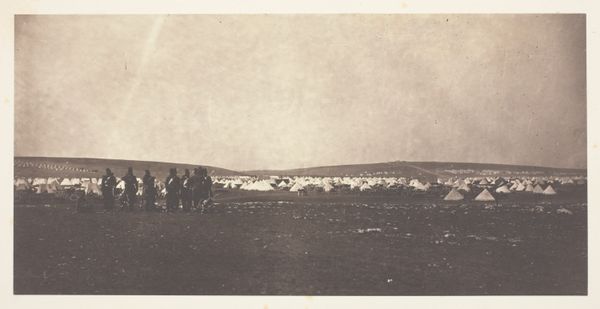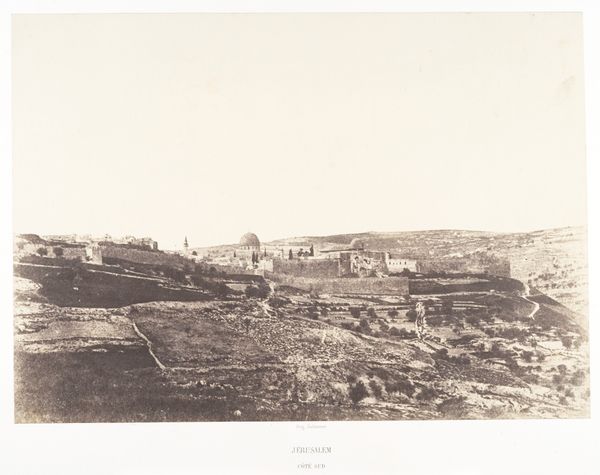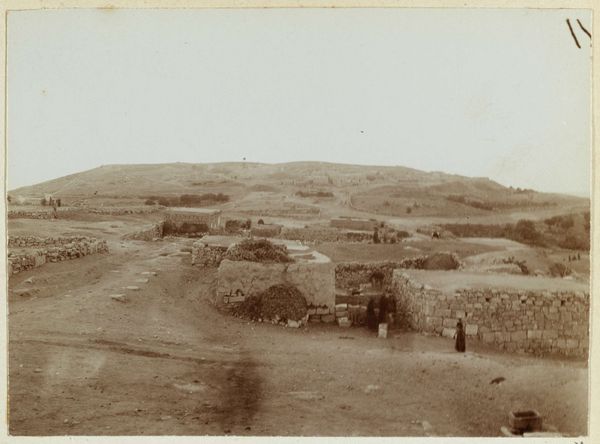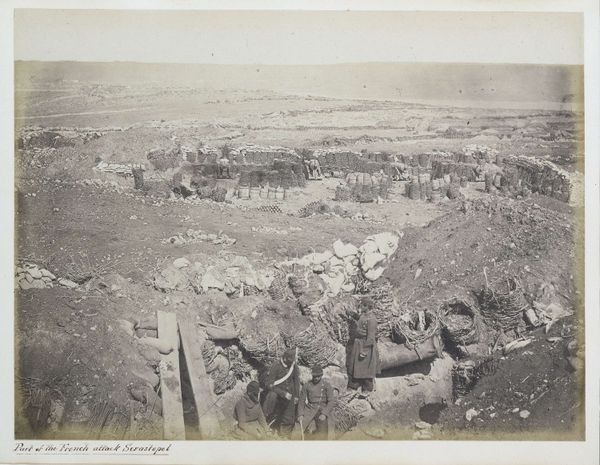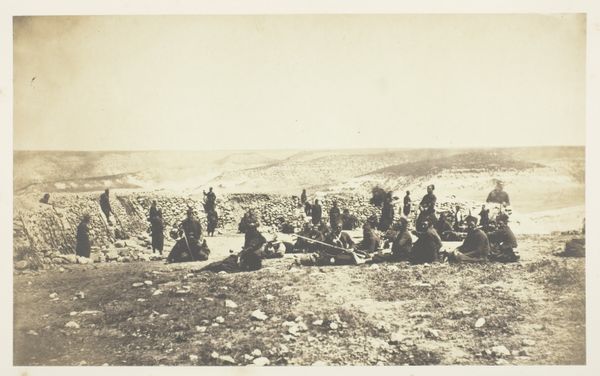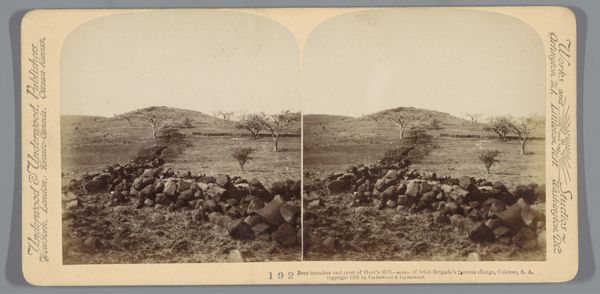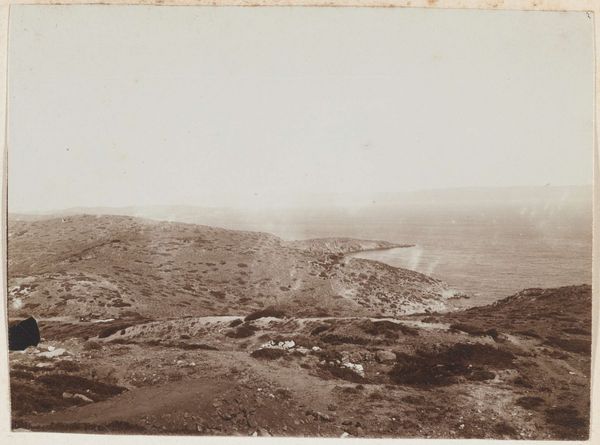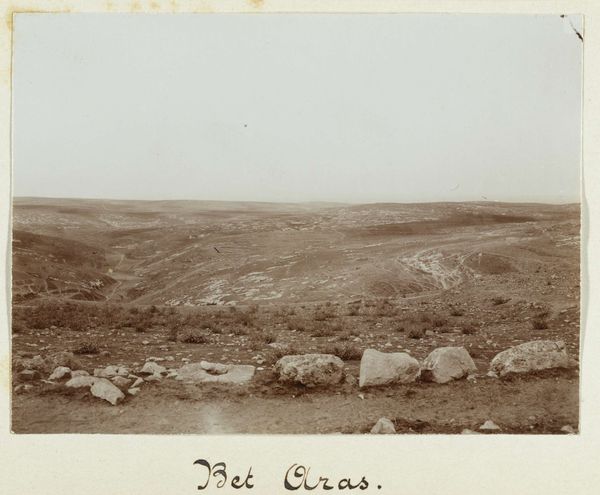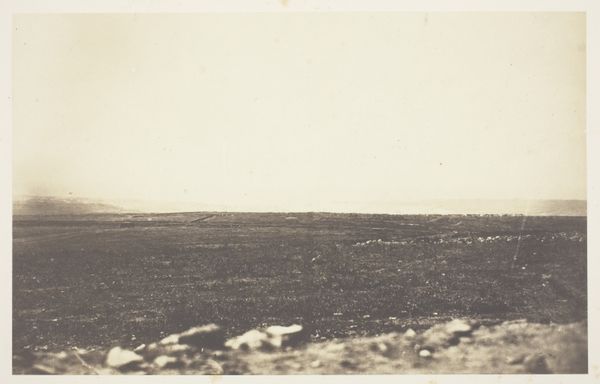
photography, site-specific, gelatin-silver-print
#
landscape
#
photography
#
ancient-mediterranean
#
site-specific
#
gelatin-silver-print
Dimensions: height 196 mm, width 253 mm
Copyright: Rijks Museum: Open Domain
Editor: This gelatin silver print captures "Gezicht op de ruïnes van de Tempel van Ceres in Carthago," or, "View of the Ruins of the Temple of Ceres in Carthage" sometime between 1880 and 1900. The photographer’s mark looks like "AM," or possibly "W," and I confess I’m immediately drawn to the scene’s overwhelming sense of age and the scale of what's been lost. What strikes you when you look at this? Curator: Age is such an interesting concept here. Think about it: a photograph *of* ancient ruins is *itself* becoming…historical. Meta, isn't it? I wonder what stories these stones could tell, or maybe what stories we *want* them to tell. Notice how the photographer has positioned us, almost *in* the ruins themselves, like we're discovering them ourselves. Do you get a sense of ownership of these spaces just by viewing it? Editor: That's an interesting point, it does feel like I'm walking among them. I do think I’m missing the stories of those people who might have occupied these spaces originally. Is there something about this kind of work, where photography captures antiquity, that invites a kind of almost... appropriative gaze? Curator: Appropriative is a loaded term, isn’t it? I wonder about the line between documenting, appreciating, and appropriating. Perhaps it depends on our intent, our curiosity, our respect for the past. If you imagine yourself stepping *into* this photograph – not to claim it, but to *learn* from it – does that shift the dynamic for you? Maybe what we are really capturing is a ghost... Editor: I like the thought of documenting the ghosts in it, actually, not occupying. That gives me a lot to think about regarding how we encounter art from different periods or cultures, really. Thanks for the helpful distinction. Curator: Absolutely. The dialogue's the art here, isn't it? Finding new paths is key.
Comments
No comments
Be the first to comment and join the conversation on the ultimate creative platform.

